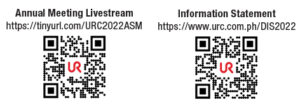SBL hike may expose banks to more risks

INCREASING the single borrower’s limit (SBL) as part of efforts to boost sustainable finance could expose lenders to more risks, the Bangko Sentral ng Pilipinas (BSP) chief said on Tuesday.
BSP Governor Felipe M. Medalla said the central bank might raise the SBL to encourage banks to support sustainable initiatives.
“The main concern there is by lifting the single borrower’s limit, we also expose the banks to bigger risks,” he said in his keynote speech during the BSP’s international research fair.
“We believe that by fostering trust and providing clear guidance, we can mitigate uncertainties and anchor expectations, thereby enhancing the effectiveness of policies,” he added.
The BSP wants to hike banks’ SBL by 15%, which will only be for loans meant to finance green projects, based on a draft circular released last week.
The SBL is a ceiling on the amount of loans, credit accommodations and guarantees a financial institution can extend to one borrower, which is meant to prevent over-concentration of risk.
Mr. Medalla said they are not keen on mandating banks to lend a certain amount for sustainable projects because the policy “does not work.”
“We mandated credit for agriculture [and] for lending to medium- and small-scale industries, but the banks just decided to pay the penalties. So clearly, there must be other ways of supporting sustainable finance,” he said.
Lenders are mandated by Republic Act 6977 or the magna carta for micro-, small-, and medium-sized enterprises to allocate 10% of their credit portfolio to small businesses.
Meanwhile, the Agri-Agra Credit Act of 2009 requires banks to lend 15% of their loan book to the agriculture sector, with a 10% quota set for agrarian reform beneficiaries.
However, banks have long opted to incur penalties for noncompliance instead of taking on the risks associated with lending to small businesses and the agri-agra sectors.
Mr. Medalla said it is important to address climate change because the Philippines is one of the most vulnerable to its adverse effects.
“So, we implemented our Sustainable Central Banking Strategy as part of our contribution to the whole-of-government approach to climate change,” he said.
The BSP launched its 11-point Sustainable Central Banking Strategy in January, which provides action points for integrating sustainability principles in its key operations and functions.
Any increase in banks’ SBL will lead to an equal increase in the risk exposure of banks, particularly in credit and concentration risks, Rizal Commercial Banking Corp. Chief Economist Michael L. Ricafort said in a Viber message.
“Thus, it is a delicate balancing act on the cost-benefit trade-offs between encouraging more lending to finance more sustainable projects while effectively managing the concentration/credit risks in the banking system,” he said.
Credit risk is the likelihood that a borrower may default on a loan, while concentration risks are those posed by exposures that have the potential to result losses large enough to threaten the operations of a bank.
“Another option would be allowing loans to finance sustainable projects for other alternative compliance,” Mr. Ricafort said. — K.B. Ta-asan




